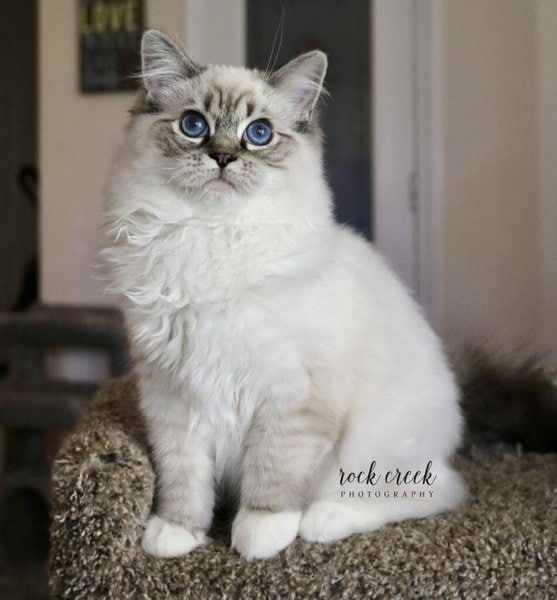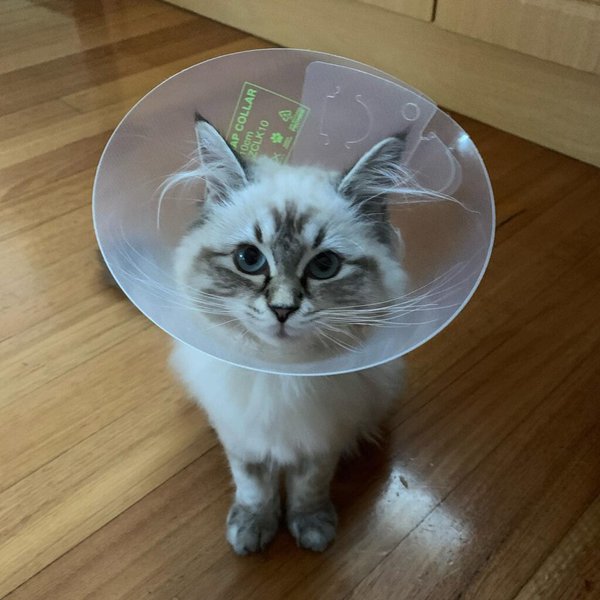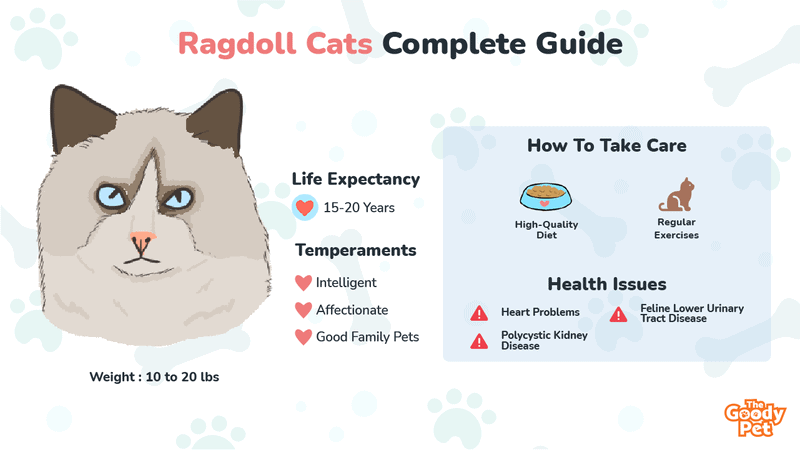If you want to add a beautiful, affectionate, and playful but docile cat to your home, one of your best options is to get a Ragdoll cat.
What exactly is a Ragdoll cat? Ragdoll cats, which are affectionately referred to as a Raggie, are a pedigree cat breed that is best known for their silky, plush coat, striking blue eyes, and very social nature. The Ragdoll is a pointed breed.
Before adding a Ragdoll cat to your home, you should find out everything there is to know about this fascinating breed, including their behavioral traits, why they are referred to as indoor cats, the kind of care they need, their life expectancy, and so on. This guide will provide you with all this information. Before getting into that, however, let’s look at the basic traits of the Ragdoll to help you determine whether this breed is the right one for you.
Is A Ragdoll Cat Right For Me?
What Two Breeds Make A Ragdoll Cat?
The Ragdoll Cat was created by interbreeding the Birman and Burmese breeds with the white Persian cat.
The very first Ragdoll cats were developed from a white Persian cat known as Josephine, so cats in this breed are sometimes referred to as daughters of Josephine.
Appearance

The Ragdoll is a large and muscular cat.
A fully grown Ragdoll cat can weigh anywhere between 10 to 20 lbs. A Ragdoll cat is considered fully grown from the age of about four years.
Most Raggies will have very beautiful blue eyes.
It is possible for a Ragdoll to have another eye color, but blue is the only color accepted by most cat fanciers associations.
The most notable feature of the Ragdoll cat is its long and silky single coat that gives this breed a very fluffy appearance. Raggies come in a wide variety of colors, with common colors being blue, chocolate, seal, cream, lilac, and red.
The rarest Ragdoll color is the lilac point.
Why Are Ragdoll Cats Indoor Cats?
Ragdolls are very trusting of anyone and everyone. This, plus their unaggressive nature means they don’t have the necessary skills to survive outside on their own.
In addition, there is a high demand for Ragdoll cats, which means your Ragdoll can easily get stolen.
This means that you should keep your Ragdoll cat indoors in order to reduce the chances of your kitty getting stolen, injured, or even killed by other animals. Speaking of this, what is the lifespan of Ragdoll cats?
How Long Do Indoor Ragdoll Cats Live?
Lifespan
Raggies generally have a long life lifespan. Most Ragdolls will live for about 15 to 20 years.
It is not surprising to hear of male Ragdoll cats that live for up to 25 years. Like most other cat breeds, however, they are genetically predisposed to some health issues that could shorten their lifespan. Some of the health problems that Ragdoll cats have includes those below.

Heart Problems
Ragdoll cats are at a high risk of developing a condition referred to as hypertrophic cardiomyopathy.
This condition is usually caused by hyperthyroidism, which leads to the thickening of the heart muscles. Cats affected by this condition will show symptoms like loss of appetite, shortness of breath, and lethargy.
In advanced stages, this condition can lead to paralysis of the tail and back legs, caused by blood clotting within the blood vessels.
Feline Lower Urinary Tract Disease
Feline Lower Urinary Tract Disease is a name given to a group of infections and conditions that affect the urinary tract. These conditions are usually characterized by difficulty passing urine, bloody urine, and incontinence.
Feline Lower Urinary Tract Disease is a very serious condition, and therefore, you should quickly call a vet if you notice any of these symptoms.
Polycystic Kidney Disease
Polycystic Kidney Disease is a genetic condition that is common among Ragdolls and is attributed to a defective gene. The condition is characterized by the development of cysts in a kitty’s kidney and liver. There is no cure for polycystic kidney disease, but the condition can be managed through medication.
How To Take Care Of Ragdoll Cats?
Diet
Ragdoll cats are a large-sized cat breed, and therefore, they need proper nutrition to cater to their growth and energy requirements. Ensure that you feed your Raggie a diet that contains lots of proteins and very few carbs.
One of the best foods for your Ragdoll is Nom Nom Cat Food, which is prepared by a certified vet nutritionist and is made from real animal proteins.
You should also give your cat food supplements, as normal diets might not suffice in providing the extra nutrients and vitamins that your cats would need for healthy growth. The Vetri Lysine Plus Immune Support Supplement for cats, for example, provides your feline friends with multivitamins that are necessary for a stronger immune system.
Exercise
Despite their large size, Ragdolls will get most of the exercise they need from walking and running around the house. However, this does not mean you should avoid playing with your kitty. You can also take your Ragdoll cat for walks on a leash if they are trained.
Ragdolls like to play with toys, such as the PetDroid Interactive Cat Toy, which will give your cat something to chase around. This toy comes with a large battery that will give your kitty long hours of playtime.
Sleep
Ragdolls love their sleep, and you should ensure that they get enough of it. Ragdoll cats sleep for up to 20 hours a day. So, where should your Ragdoll kitten sleep? You can either provide your Ragdoll kitten with a comfy place to sleep or allow them to sleep on your bed. Your Ragdoll kitten will enjoy sleeping next to you because you provide a great source of heat.
Can Ragdoll Cats Be Left Alone During The Day? Temperaments Of Ragdoll Cats
Ragdolls need a lot of attention, which means that, if possible, Ragdolls should not be left alone for long.
If you have a Ragdoll, but you are not at home for long periods of time, the best option is to have 2 Ragdoll cats. This way, they can play with each other and keep each other company.
Affectionate
Ragdolls are very affectionate and social. They always want to be in your company, following you all over the house as you go about your activities. Ragdoll cats also love to cuddle and will curl up on your lap whenever they get the opportunity.
Intelligent
A lot of people wrongly assume Ragdolls are dumb because of their relaxed and easy-going nature.
So, are Ragdolls smart?
These felines are highly intelligent, which also makes Ragdolls easy to train. You can easily train your Ragdoll to use their litter box, do tricks, play fetch, come when you call them, walk on a leash, and so on.
Good Family Pets
Ragdolls are great family pets. They get along well with everyone in the family. In addition, they are very great with kids and will tolerate many of the games that kids want to play.
They are also comfortable in homes with other pets. Ragdolls will even get on well with dogs.
Unlike the common misconception, Ragdolls are unlikely to run away from home. The only reason why Ragdoll owners insist on keeping their Raggies indoors is that their docile nature makes them poorly equipped to defend themselves from predators.
Are Ragdoll Cats High Maintenance? Grooming Tips For Ragdoll Cats
Shedding
Before bringing a Raggie home, you’ll definitely want to know whether Ragdoll cats shed a lot and whether Ragdoll cats are hypoallergenic.
Ragdolls do shed, so they are not a great choice for you if you are allergic. Fortunately, shedding can be reduced through regular grooming. Grooming also helps to prevent their hair from matting and tangling. You should invest in the FURminator Deshedding Tool, which will reduce hairballs on your Raggie’s coat and reduce shedding by up to 90%.
Unless you are comfortable with living in a house full of cat hairs, you will also need a good vacuum. A great option here is the iRobot Roomba i3+.
With its automatic cleaning feature, the iRobot Roomba i3+ can easily make you forget that your beloved Raggie sheds because this vacuum will keep your home clean without making cleaning a chore for you.
Bathing
Ragdolls are very good at grooming themselves, and they are not very fond of baths. This means you should only give your Ragdoll a bath only when it is absolutely necessary.
If you have to bathe your Ragdoll, avoid using products and shampoos meant for humans. Use shampoos that are created specifically for cats.
We personally recommend the John Paul Pet Oatmeal Shampoo For Cats, which is formulated in such a way that it will leave your Raggie’s skin conditioned and moisturized.
Do Ragdolls Need Haircuts?
There’s no need to give your Ragdoll a haircut. Doing so will get rid of the fluffiness for which Raggies are loved, and could also change your Ragdoll’s coat color.
Related Questions
Is It Better To Get A Male Or Female Ragdoll Cat? While some people believe that male Ragdolls are better, the suitability of a cat comes down to their personality, rather than gender. That said, female Ragdolls tend to be more aggressive, while some male Ragdolls spray to mark their territory. Keep these in mind when deciding whether to get a male or female Ragdoll.
Do Ragdoll Cats Destroy Furniture? Ragdolls are naturally docile, so they don’t typically claw on furniture and other things. If your Ragdoll starts clawing on furniture, there is a high chance that they are not getting enough mental stimulation. A good way to keep your Ragdoll from destroying furniture is to buy a scratching post for them.
Why Are Ragdoll Cats So Expensive? Ragdolls are expensive because of their high demand. A lot of people want to keep Ragdolls because of their beautiful blue eyes, relaxed nature, and their soft, fluffy coat. So, how much is a Ragdoll kitten? When buying from a breeder, you can expect to pay anywhere between $600 to $2,000 for a Ragdoll kitten.





